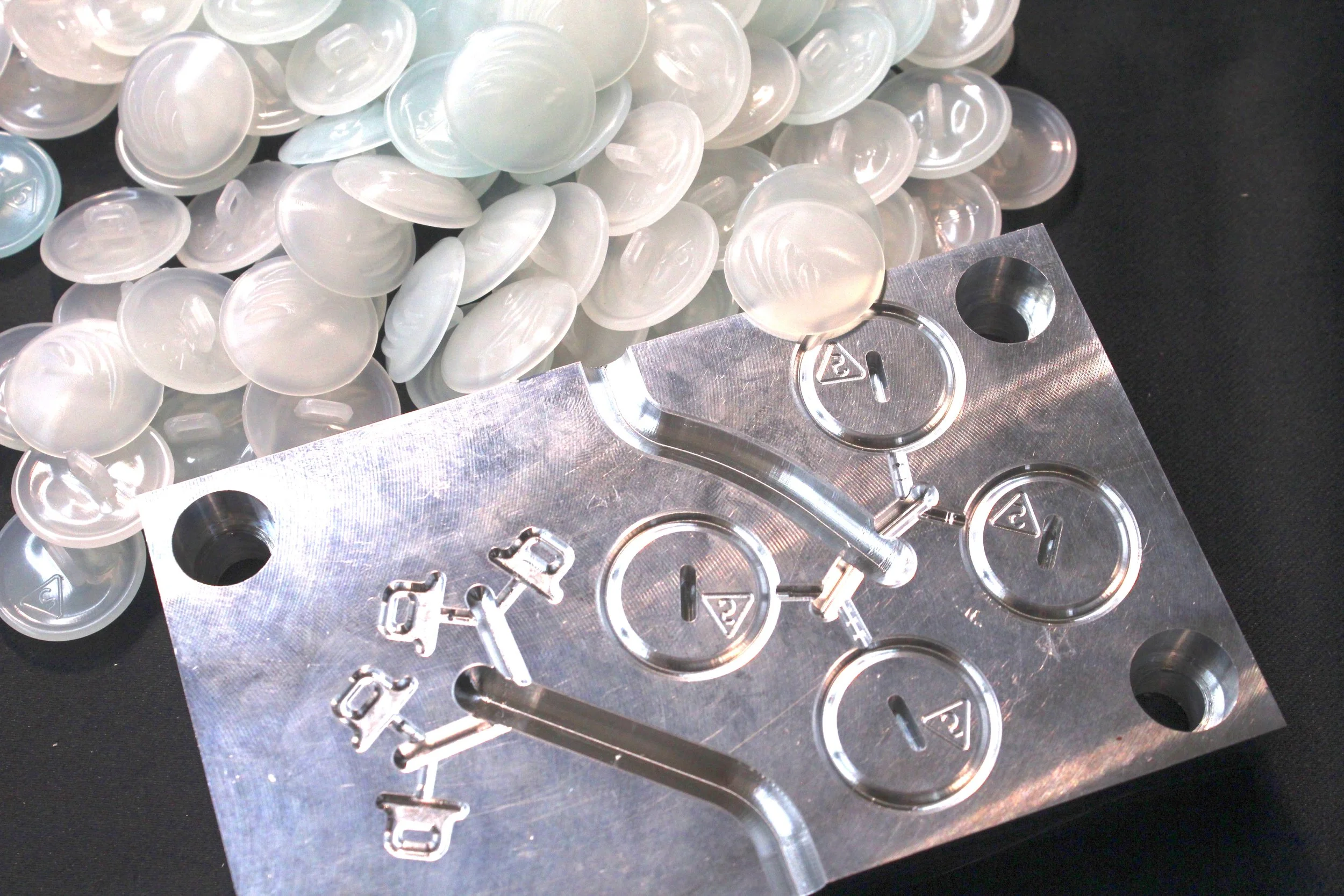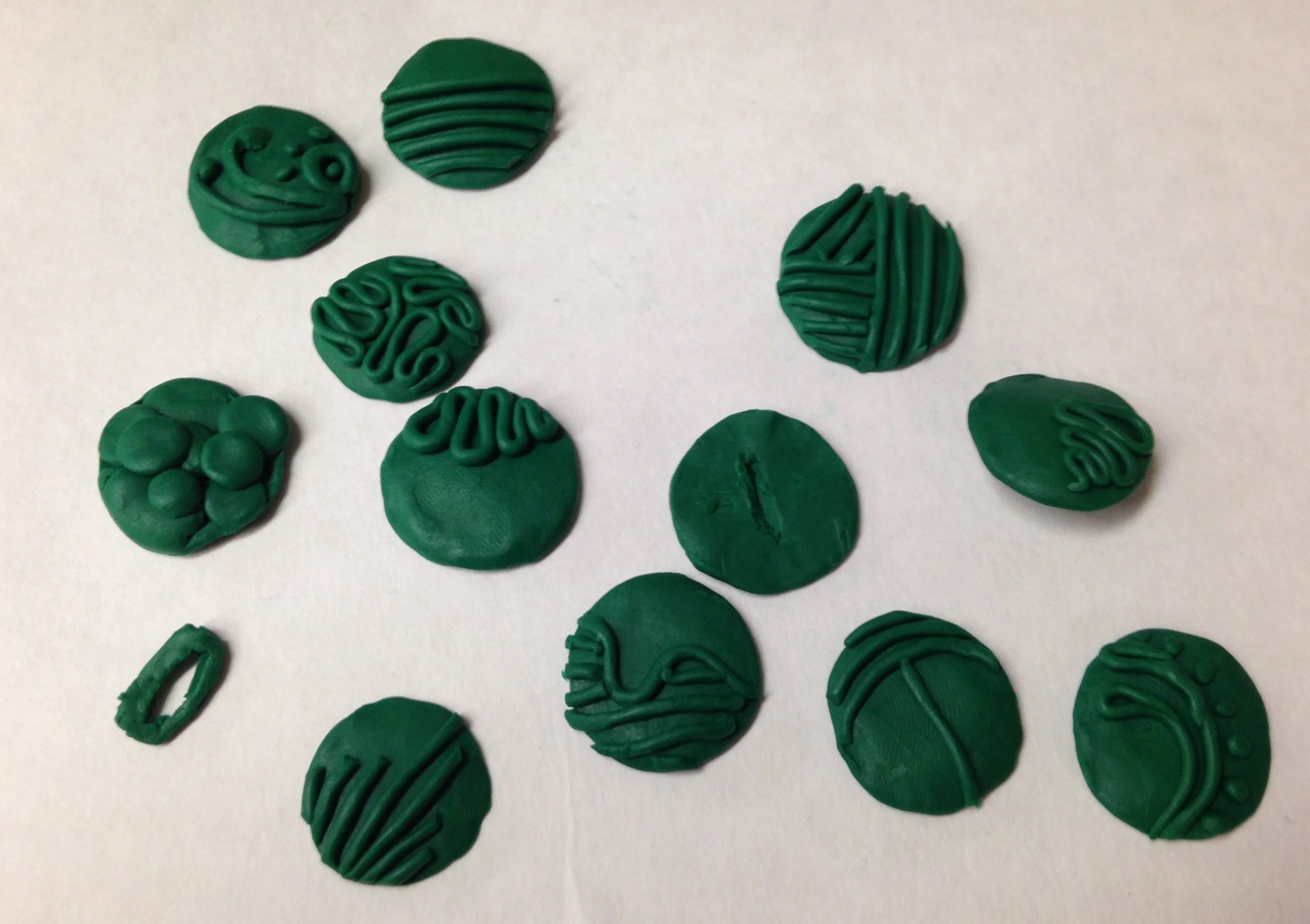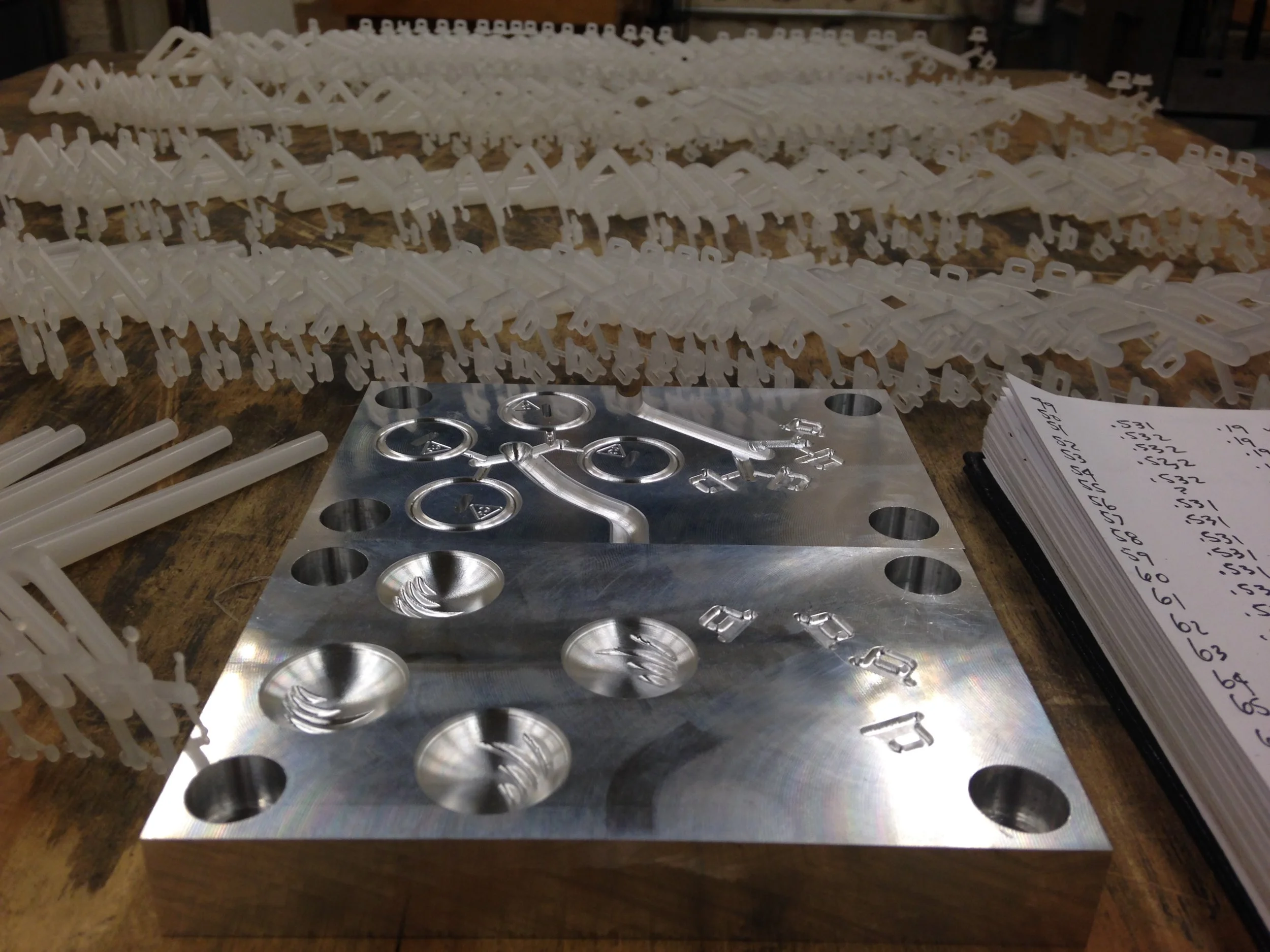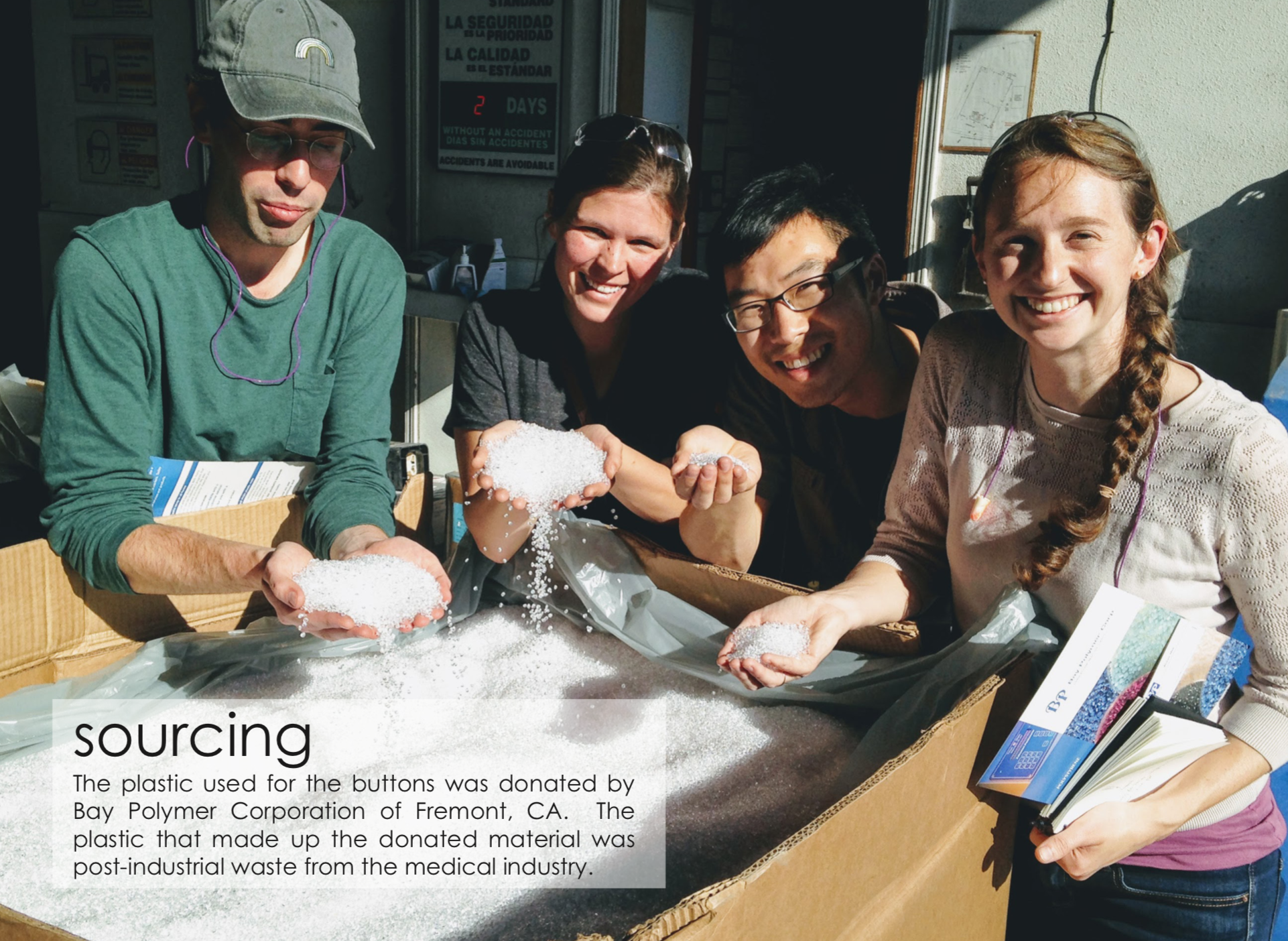B’cycled, 2016
a set of recycled and recyclable buttons
materials and processes: aluminum, machining, polypropylene (PP5), injection molding, overmolding
this project explored the manufacturing infrastructure before, during, and after the injection molding process.
i wanted to understand where plastics used in injection molding come from, and what happens to injection molded products after they are no longer used, in order to see the broader social and environmental impacts of injection molding as a process.
i machined the molds using a Hass VF1 CNC machine, and produced the buttons on an Arburg Allrounder 375V injection molding machine. the buttons are made from post-industrial recycled polypropylene plastic from the medical industry, and they could in theory be recycled after use.
Initial concept sketches and prototypes
after sketching out some concepts, I used clay to test out various button designs.
my goal was to create a simple, yet elegant design that was also machinable with a 1/16” end mill.
technical approach
due to the undercut that the button attachment hole makes, i had to decide between creating a three-piece mold, using a sliding insert, or overmolding to achieve the desired geometry.
i chose to use overmolding as my technique because I wanted to learn about how much accuracy was necessary. the final design features a hook piece that is first injection molded itself, then inserted into a slot in the next mold for overmolding.
CAd and cnc machining
i created the mold design in SolidWorks using the mold tools.
the buttons were so small that i was able to create both the hook and overmolding dies using one set of of aluminum blocks. the hook side of the die set is shown here. i used HSM Works to create the CAM programs for the Haas VF1 CNC milling machines that machined the part.
molding the buttons
once the dies were machined, i molded the small hooks that would then be overmolded in the second step.
after creating hundreds of small hooks, i placed four of the hooks into the second mold and overmolded them to create the final button shape.
buttons galore
at least 120 buttons were created that met functional and aesthetic requirements.
over 300 buttons did not meet the requirements, due to short shot or flash defects.
recycling
the buttons had relatively minimal coloring and were fully polypropylene (PP5), so they could be reground and used for student projects in the lab, or they could be recycled in collaboration with a vendor who accepts small items.
these buttons are smaller than the typical 3” x 3” minimum size that curbside recyclers often require in order to prevent materials from just falling through the cracks in recycling equipment, so they cannot simply be tossed in a home recycling bin.

















